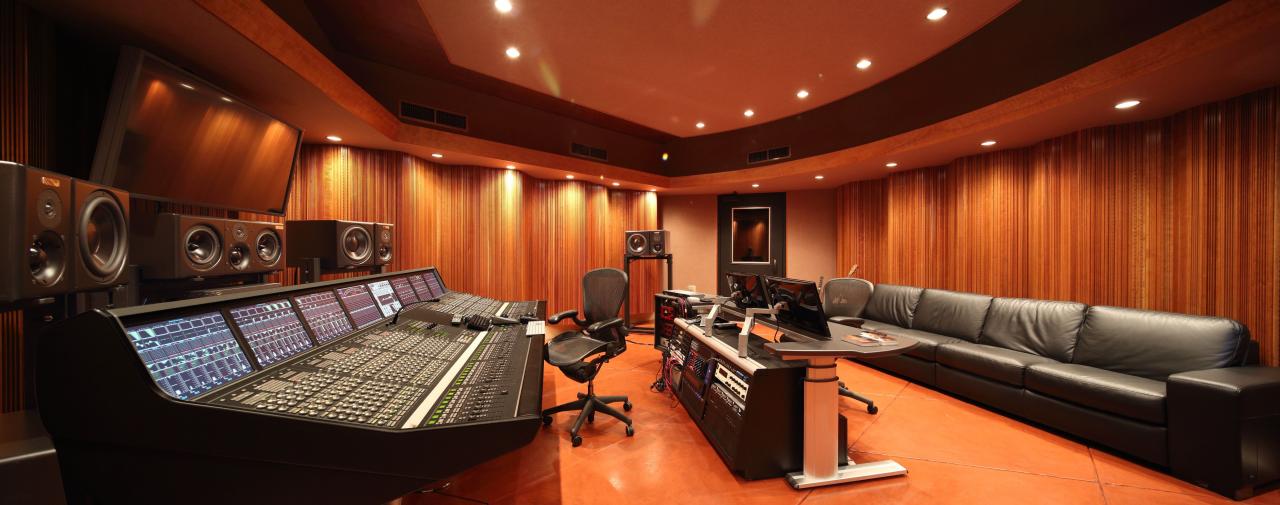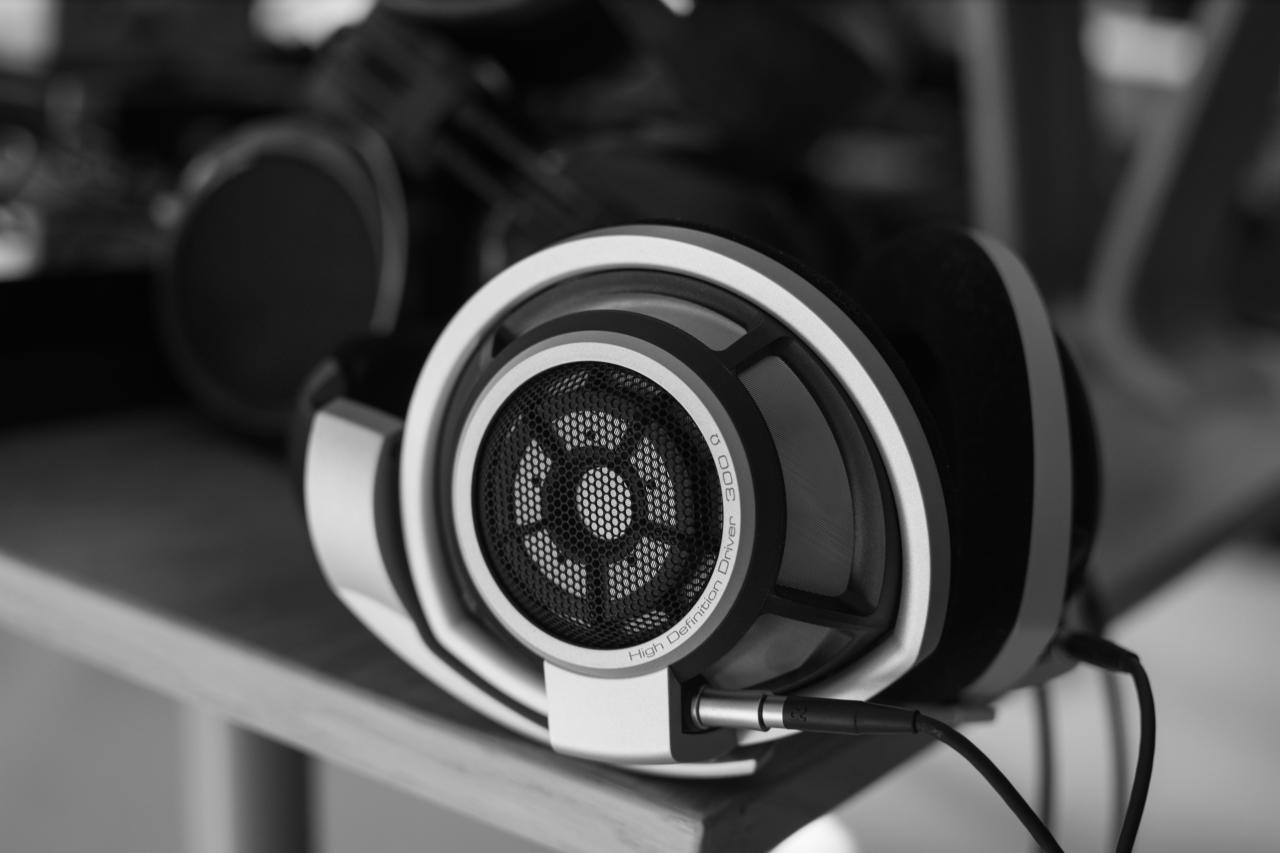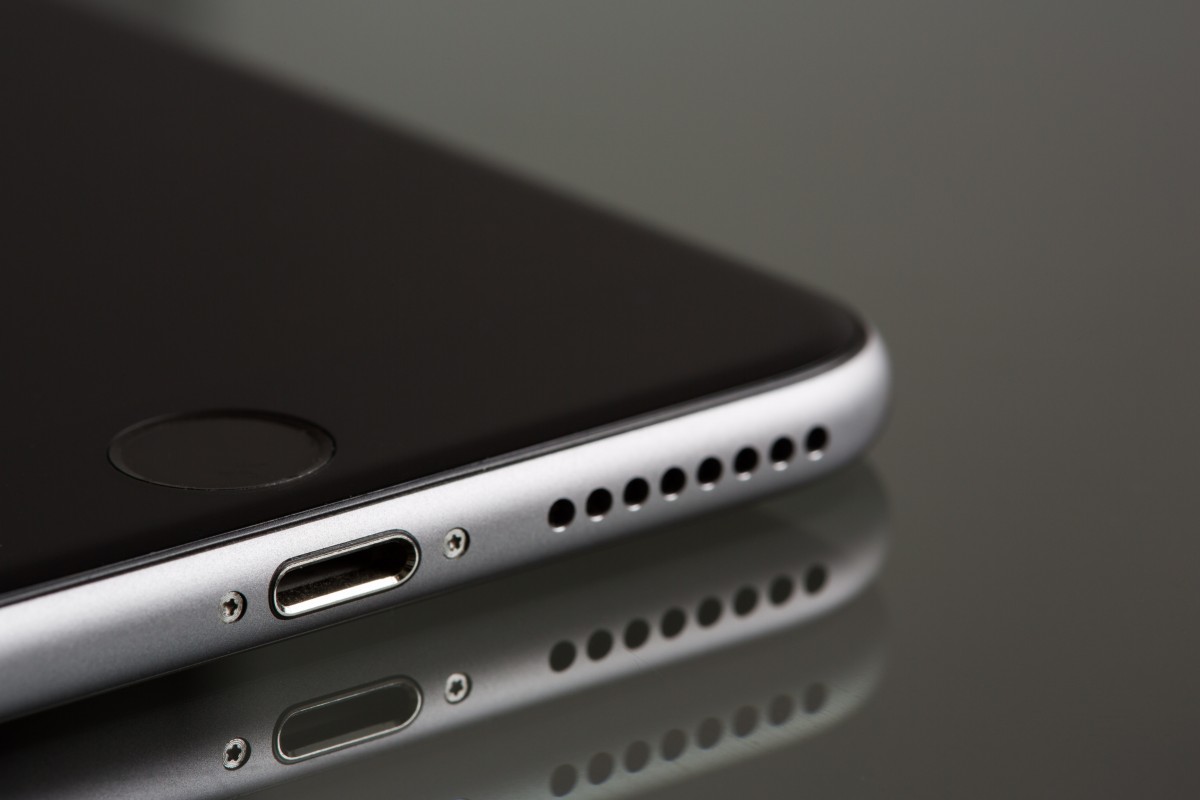The Quest for Perfect Audio
In an increasingly digital world, where content consumption is paramount, the quality of our audio experience has never been more critical. Whether you’re a passionate audiophile seeking to uncover every nuance of your favorite music, a professional working with sound, or simply someone who enjoys immersive entertainment, the right audio gear can transform your auditory journey from ordinary to extraordinary. This comprehensive article delves deep into the fascinating realm of audio equipment, exploring the fundamental principles that govern sound reproduction, the diverse range of devices available, their intricate technical specifications, and the art of configuring them for an unparalleled listening experience. We’ll uncover how the latest innovations are pushing the boundaries of sound fidelity, impacting various aspects of our lives, and shaping the future of how we perceive and interact with audio.
Understanding the Fundamentals: The Science of Sound Reproduction
Before diving into specific gear, it’s crucial to grasp the basic principles of how sound is created, transmitted, and ultimately perceived by our ears. This foundational understanding empowers you to make informed decisions about your audio setup.
A. Analog vs. Digital Audio
The journey of sound can take two distinct paths: analog or digital. Understanding the differences is key to appreciating various audio components.
- Analog Audio: This represents sound waves as continuous electrical signals or physical variations (like grooves on a vinyl record). The waveform of the electrical signal directly mirrors the waveform of the original sound. Think of a microphone converting sound pressure into a varying electrical voltage – that’s an analog signal. While potentially offering a more “natural” sound to some purists, analog signals are susceptible to noise, interference, and degradation during transmission and storage.
- Digital Audio: This involves converting analog sound waves into a series of numerical values (binary code – 0s and 1s) through a process called sampling and quantization. The sampling rate (measured in Hertz, Hz, e.g., 44.1 kHz for CDs) determines how many times per second the analog waveform is measured. The bit depth (e.g., 16-bit, 24-bit) determines the precision of each measurement, or how many distinct amplitude levels can be recorded. Higher sampling rates and bit depths result in more accurate digital representations of the original sound, leading to what’s known as high-resolution audio. Digital audio is highly resistant to noise and degradation during storage and transmission, making it ideal for modern playback, but the conversion process itself can introduce subtle artifacts if not handled expertly.
B. The Audio Signal Chain
Every piece of audio gear plays a specific role in what’s known as the “audio signal chain.” This chain typically begins with a source and ends with transducers that convert electrical signals back into audible sound waves.
- Source: This is where the audio originates. It could be a turntable, a CD player, a digital audio player (DAP), a streaming service, a computer, or even a microphone.
- Preamplifier (Preamp): Often integrated into other components, a preamp takes a weak signal from a source (especially very low-level signals from turntables, requiring a “phono stage”) and boosts it to a standard “line level” without adding distortion. It also typically includes volume control and input selection.
- Digital-to-Analog Converter (DAC): For digital sources, a DAC is essential. It converts the digital data (0s and 1s) back into an analog electrical signal that amplifiers can understand. The quality of the DAC significantly impacts the fidelity of digital audio.
- Amplifier (Amp): This component takes the line-level analog signal from the preamp or DAC and boosts its power significantly to drive loudspeakers or headphones. Different amplifier classes (Class A, AB, D) offer varying efficiencies and sonic characteristics.
- Transducers (Loudspeakers/Headphones): These are the final stage, converting the amplified electrical signal back into mechanical vibrations that create audible sound waves. They are often referred to as “drivers” within headphones or individual speaker units (tweeters, mid-range, woofers).
C. Key Audio Terminology
Understanding these terms helps in evaluating audio gear specifications:
- Frequency Response: The range of frequencies (measured in Hertz, Hz) that a piece of equipment can reproduce. The human ear can typically hear sounds between 20 Hz (deep bass) and 20,000 Hz (20 kHz, high treble). A flat frequency response across this range is generally desirable, meaning all frequencies are reproduced at equal loudness.
- Impedance: Measured in Ohms (Ω), this is the electrical resistance of a circuit or component. Matching the impedance of components (especially amplifiers to speakers/headphones) is crucial for optimal power transfer and sound quality. Mismatched impedance can lead to reduced volume, distortion, or even damage.
- Sensitivity: For speakers and headphones, this indicates how efficiently they convert electrical power into sound pressure level (SPL), measured in decibels (dB) per milliwatt (mW) or watt (W). Higher sensitivity means less power is needed to achieve a given loudness.
- Signal-to-Noise Ratio (SNR): Measured in dB, this indicates the ratio of the desired audio signal to unwanted background noise. A higher SNR means a cleaner, more pristine sound.
- Total Harmonic Distortion (THD): Expressed as a percentage, this measures the level of unwanted harmonics (multiples of the original frequencies) added to the signal by the equipment. Lower THD indicates cleaner, more accurate sound reproduction.
- Crosstalk: In stereo or multi-channel audio, crosstalk refers to the leakage of signal from one channel into another. Lower crosstalk values (measured in dB) indicate better channel separation and a more defined stereo image.
Essential Audio Gear Components
The world of audio gear is vast and diverse, catering to various needs, budgets, and listening preferences. Let’s explore the core components that form the backbone of any serious audio setup.
A. Headphones: Personal Sound Sanctuaries
Headphones offer an intimate and immersive listening experience, directly coupling sound to your ears. They come in various forms, each with distinct advantages.
- Over-Ear (Circumaural) Headphones: These fully enclose the ear, providing excellent passive noise isolation and often the most immersive soundstage. They are typically larger and can be open-back or closed-back.
- Open-Back: The earcups have perforations or are entirely open, allowing air and sound to pass through. This creates a wider, more natural, “out-of-head” soundstage, often preferred by audiophiles for critical listening. However, they offer poor noise isolation and leak sound to the surroundings.
- Closed-Back: The earcups are sealed, providing superior noise isolation (blocking external sounds) and preventing sound leakage. They are ideal for noisy environments, recording, or when you don’t want to disturb others, but their soundstage might be perceived as less open.
- On-Ear (Supra-aural) Headphones: These rest on top of the ears rather than enclosing them. They are generally more compact and lighter than over-ear models, making them more portable, but they offer less noise isolation.
- In-Ear Monitors (IEMs) / Earbuds: These fit directly into the ear canal.
- Earbuds: These rest just outside the ear canal, offering minimal isolation but high portability.
- IEMs: These create a seal within the ear canal, providing excellent noise isolation and often very precise sound reproduction, preferred by musicians for monitoring and by audiophiles on the go.
- Wireless Headphones (Bluetooth): Utilizing Bluetooth technology, these offer unparalleled convenience, eliminating cables. Advancements in Bluetooth codecs (like LDAC, aptX Adaptive, LHDC) have significantly improved wireless audio quality, approaching wired fidelity for supported devices.
- Noise-Cancelling Headphones: These use active noise cancellation (ANC) technology, employing microphones to pick up ambient noise and then generating anti-phase sound waves to cancel it out. Ideal for travel or noisy offices, they enhance focus but can slightly alter the sound signature.
B. Loudspeakers: Sharing the Soundstage
Loudspeakers are designed to fill a room with sound, offering a shared listening experience. They vary widely in size, design, and intended use.
- Bookshelf Speakers: Compact speakers designed to be placed on shelves, stands, or desks. They typically offer excellent sound quality for their size but may require a subwoofer for deep bass extension.
- Floor-Standing (Tower) Speakers: Larger speakers that stand directly on the floor. They usually feature multiple drivers and larger cabinets, allowing for fuller sound, deeper bass, and greater output, making them suitable for larger rooms and home theater setups.
- Soundbars: All-in-one speaker systems designed to sit beneath a TV, offering a significant upgrade over built-in TV speakers. Many include virtual surround sound processing or even upward-firing drivers for immersive Dolby Atmos/DTS:X experiences.
- Subwoofers: Dedicated speakers designed to reproduce very low bass frequencies (typically below 80-100 Hz). They add depth, impact, and realism, especially for music with strong bass lines and movie special effects.
- Portable Bluetooth Speakers: Battery-powered, often rugged speakers designed for on-the-go use. They prioritize portability and convenience, with sound quality varying widely.
- Wireless Multi-Room Speakers (e.g., Sonos): Speakers designed to integrate into a connected home audio system, allowing music to be streamed wirelessly to multiple rooms, often controlled via a single app.
C. Amplifiers: Powering the Performance
An amplifier is the heart of any traditional audio system, providing the necessary power to drive speakers or headphones.
- Integrated Amplifiers: The most common type for consumer audio, an integrated amplifier combines both a preamplifier (for input selection and volume control) and a power amplifier (for boosting the signal to speakers) in one chassis. Many also include built-in DACs.
- Preamplifiers (Separate): For high-end systems, a separate preamplifier offers more dedicated control over input switching, volume, and potentially tone shaping, without the added noise or heat of a power amplifier section.
- Power Amplifiers (Separate): These are solely dedicated to boosting the signal from a preamplifier to drive speakers. They are often chosen for their ability to deliver substantial power and maintain fidelity at high volumes, especially for demanding speakers.
- Headphone Amplifiers (Head Amps): Dedicated amps for headphones. While many devices have built-in headphone jacks, a separate headphone amp can provide more power for high-impedance headphones, improve dynamics, and enhance overall sound quality. Many also include a high-quality DAC.
- AV Receivers (AVRs): These are multi-channel integrated amplifiers designed for home theater setups. They combine a multi-channel amplifier, a preamplifier, a radio tuner, and often comprehensive video switching capabilities, supporting surround sound formats like Dolby Atmos and DTS:X.
D. Digital-to-Analog Converters (DACs): The Digital Bridge
For any digital audio source (computer, smartphone, streaming device, CD player), a DAC is essential to convert the digital zeroes and ones back into an analog electrical signal that can be amplified and heard.
- Standalone DACs: Dedicated units designed solely for digital-to-analog conversion. They often employ high-quality components and sophisticated circuitry to minimize jitter (timing errors in the digital signal) and provide a cleaner, more accurate analog output than built-in DACs in computers or phones.
- DAC/Amp Combos: Many portable and desktop DACs also integrate a headphone amplifier, offering a convenient all-in-one solution for improving audio from digital sources.
- Built-in DACs: All digital audio devices (smartphones, laptops, CD players, AV receivers) have built-in DACs. The quality varies significantly, and external DACs are often preferred for superior performance.
E. Sources: Where the Music Lives
The source is where your audio journey begins. The quality of the source material and the device playing it are fundamental to the final sound.
- Turntables (Record Players): For vinyl enthusiasts, turntables offer a warm, analog sound and a tactile experience. They require a dedicated “phono preamplifier” (often built into the turntable or an integrated amp) to amplify the very low signal from the cartridge and apply RIAA equalization.
- CD Players: While perhaps less common than in their heyday, CD players still offer excellent sound quality from physical CDs.
- Digital Audio Players (DAPs): Portable devices specifically designed for high-resolution audio playback, often with dedicated DACs and powerful headphone amplifiers. They cater to audiophiles on the go.
- Network Streamers / Music Servers: Devices that connect to your home network and stream audio from online services (Spotify, Tidal, Qobuz) or local digital music libraries (e.g., FLAC, WAV files). They often feature high-quality DACs and offer convenient app control.
- Computers / Smartphones: While ubiquitous sources, their built-in audio hardware often lacks the refinement of dedicated components, making external DACs and amps beneficial.
F. Cables and Accessories: The Unsung Heroes
Often overlooked, the quality of cables and accessories can subtly, yet significantly, impact your audio system’s performance.
- Interconnect Cables: Connect components like a DAC to an amplifier. Quality interconnects minimize signal loss and interference.
- Speaker Cables: Connect the amplifier to the loudspeakers. Proper gauge and material are important for optimal power delivery.
- Power Conditioners / Surge Protectors: Protect your equipment from power fluctuations and clean the electrical current, potentially reducing noise in the audio signal.
- Acoustic Treatment: Room acoustics profoundly impact sound quality. Panels, diffusers, and bass traps can control reflections and standing waves, leading to a clearer, more balanced sound.
- Headphone Stands / Cases: Practical accessories for organization, protection, and display.
Configuring Your Ultimate Audio Setup: A Guide to Synergy
Building an ultimate audio setup isn’t just about buying the most expensive components; it’s about achieving synergy, where each component complements the others to create a harmonious and superior overall sound.
A. Define Your Budget and Priorities
Before anything else, establish a realistic budget. Audio gear can range from affordable to astronomically expensive. Prioritize what’s most important to you:
- Portability vs. Home Use: Are you mostly listening on the go or in a dedicated space?
- Music vs. Movies/Gaming: Different gear excels at different tasks.
- Sound Signature Preference: Do you prefer warm, neutral, bright, or bass-heavy sound?
- Source Material: Are you listening to streaming, vinyl, or high-res digital files?
B. Choose Your Primary Listening Device
Decide whether your primary focus is on headphones or loudspeakers. This will dictate the central components of your system.
- Headphone-Centric Setup: If headphones are your main focus, invest in a high-quality pair of headphones, followed by a dedicated DAC/headphone amplifier combo. Your source can be a computer, DAP, or smartphone.
- Loudspeaker-Centric Setup: If speakers are paramount, choose speakers first, considering your room size and acoustic characteristics. Then select an amplifier that has sufficient power and a good impedance match for your chosen speakers. You’ll also need a suitable source (streamer, turntable, CD player) and potentially a separate DAC.
C. Matching Components for Synergy
This is where the magic happens. Mismatched components can hinder performance.
- Amplifier-Speaker/Headphone Matching: Ensure your amplifier has enough power (wattage) to drive your speakers or headphones effectively, especially if they have low sensitivity or high impedance. Consult specifications for recommended impedance ranges.
- DAC Quality: For digital sources, a high-quality DAC is crucial. Its performance should be commensurate with the rest of your system.
- Cable Quality: While not as impactful as major components, good quality, well-shielded cables minimize interference and signal degradation. Avoid overly expensive “audiophile” cables if your budget is limited, but don’t compromise entirely.
- Room Acoustics (for Loudspeakers): This is arguably one of the most critical, yet often overlooked, aspects of loudspeaker audio. The listening room itself is a component. Consider speaker placement, listening position, and if possible, introduce acoustic treatments (panels, bass traps) to control reflections and standing waves.
D. Source Material and File Quality
The highest quality gear can’t make poor source material sound good.
- High-Resolution Audio: If your gear supports it, seek out high-resolution audio files (e.g., FLAC, ALAC, DSD) from platforms like Qobuz or Tidal HiFi, or purchase high-res downloads.
- Streaming Service Tiers: Many streaming services offer different quality tiers. Opt for the highest quality available (e.g., lossless or high-bitrate streaming) if your bandwidth allows.
- Analog Sources: For vinyl, ensure your records are clean and your turntable is properly set up (cartridge alignment, tracking force, anti-skate).
E. Calibration and Fine-Tuning
Once set up, take the time to fine-tune your system.
- Speaker Placement: Experiment with speaker distance from walls, toe-in angle, and distance from the listener to optimize imaging and soundstage.
- Subwoofer Integration: Properly integrate your subwoofer by adjusting its crossover frequency and phase to seamlessly blend with your main speakers.
- Equalization (EQ): Use EQ sparingly to correct specific room acoustic issues or personal preferences, but avoid over-processing.
- Burn-in Period: Some audio components, particularly new drivers in headphones and speakers, benefit from a “burn-in” period (playing music for dozens or hundreds of hours) to reach their optimal sound.
The Impact and Future of Audio Gear
The evolution of audio gear is not just about better sound; it’s about enriching our lives in myriad ways and driving future technological advancements.
A. Immersive Experiences in Entertainment
- Spatial Audio / 3D Audio: Technologies like Dolby Atmos and DTS:X, increasingly available through headphones and soundbars, create a truly three-dimensional soundscape, where sounds appear to come from all around and above you. This revolutionizes movie watching, gaming, and even music.
- Virtual Reality (VR) and Gaming: Immersive audio is crucial for VR. Advanced audio gear, often integrated into VR headsets, provides positional audio cues that enhance realism and player immersion, making virtual worlds feel more tangible.
- Augmented Reality (AR): As AR glasses become more prevalent, sophisticated audio solutions will be needed to blend digital sound seamlessly with the real world, providing contextual information and enhancing AR experiences without blocking environmental sounds entirely.
B. Professional Applications and Content Creation
- Studio Monitoring: High-fidelity headphones and studio monitors are indispensable for music producers, sound engineers, and broadcasters to accurately mix and master audio.
- Podcasting and Streaming: The boom in content creation demands high-quality microphones, audio interfaces, and digital signal processing (DSP) tools to ensure clear, professional-sounding vocals.
- Accessibility: Audio technologies, like advanced hearing aids and assistive listening devices, are being enhanced with AI and connectivity, significantly improving the lives of individuals with hearing impairments.
C. The Rise of “Smart” Audio
- Voice Assistants: Smart speakers and soundbars with integrated voice assistants (e.g., Alexa, Google Assistant) allow for hands-free control of music playback, smart home devices, and information retrieval.
- AI-Powered Audio Processing: AI is increasingly used for adaptive noise cancellation, real-time audio upscaling, and personalized sound profiles that adjust based on listener preferences or environmental conditions.
- Networked Audio Systems: Multi-room audio systems and wireless streaming protocols are creating seamless, interconnected home audio ecosystems, allowing control from a single device.
D. Sustainability in Audio Production
As with other electronics, there’s a growing focus on sustainability in the audio gear industry. This includes:
- Recycled Materials: Using recycled plastics and metals in device construction.
- Energy Efficiency: Designing amplifiers and active speakers that consume less power.
- Modular Design and Repairability: Creating products that are easier to repair and upgrade, extending their lifespan and reducing electronic waste.
- Responsible Sourcing: Ensuring that raw materials are ethically sourced.
E. The Future: Personalized and Ubiquitous Audio
The trend is towards increasingly personalized and context-aware audio experiences.
- Customizable Sound Profiles: Future audio gear might use biometric data or AI to automatically adjust sound to your unique ear shape, hearing abilities, or even mood.
- “Invisible” Audio: As technology shrinks, audio solutions might become less obtrusive, perhaps integrated into everyday objects or even directly into clothing, providing sound without visible speakers or headphones.
- Advanced Haptics for Audio: Haptic feedback could evolve to complement audio, allowing users to “feel” bass frequencies or specific sound effects, enhancing immersion, particularly in VR/AR.
- Auditory Health Integration: Audio devices could increasingly incorporate features for monitoring hearing health, providing warnings for excessive listening levels, or even offering personalized hearing tests.
Conclusion
The journey to ultimate sound is a continuous exploration, driven by passion, precision, and relentless innovation. From the intricate science of analog and digital signals to the diverse array of headphones, loudspeakers, amplifiers, and DACs, the world of audio gear offers endless possibilities for sonic enhancement. It’s not merely about playing back sounds; it’s about revealing the artistry, the emotion, and the subtle textures embedded within every note.
As technology continues to advance, integrating more powerful AI, immersive spatial audio, and sustainable practices, the future of audio promises experiences that are more personalized, intuitive, and deeply integrated into our lives than ever before. Whether you’re embarking on your first audio adventure or refining a meticulously crafted system, the pursuit of ultimate sound is a rewarding endeavor that connects us more profoundly with the music, movies, and moments that matter most. So, take a deep breath, close your eyes, and let the symphony begin.














